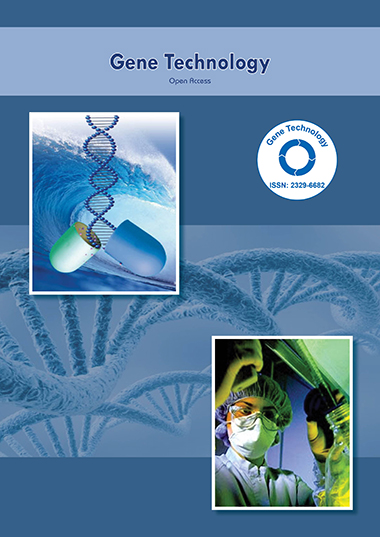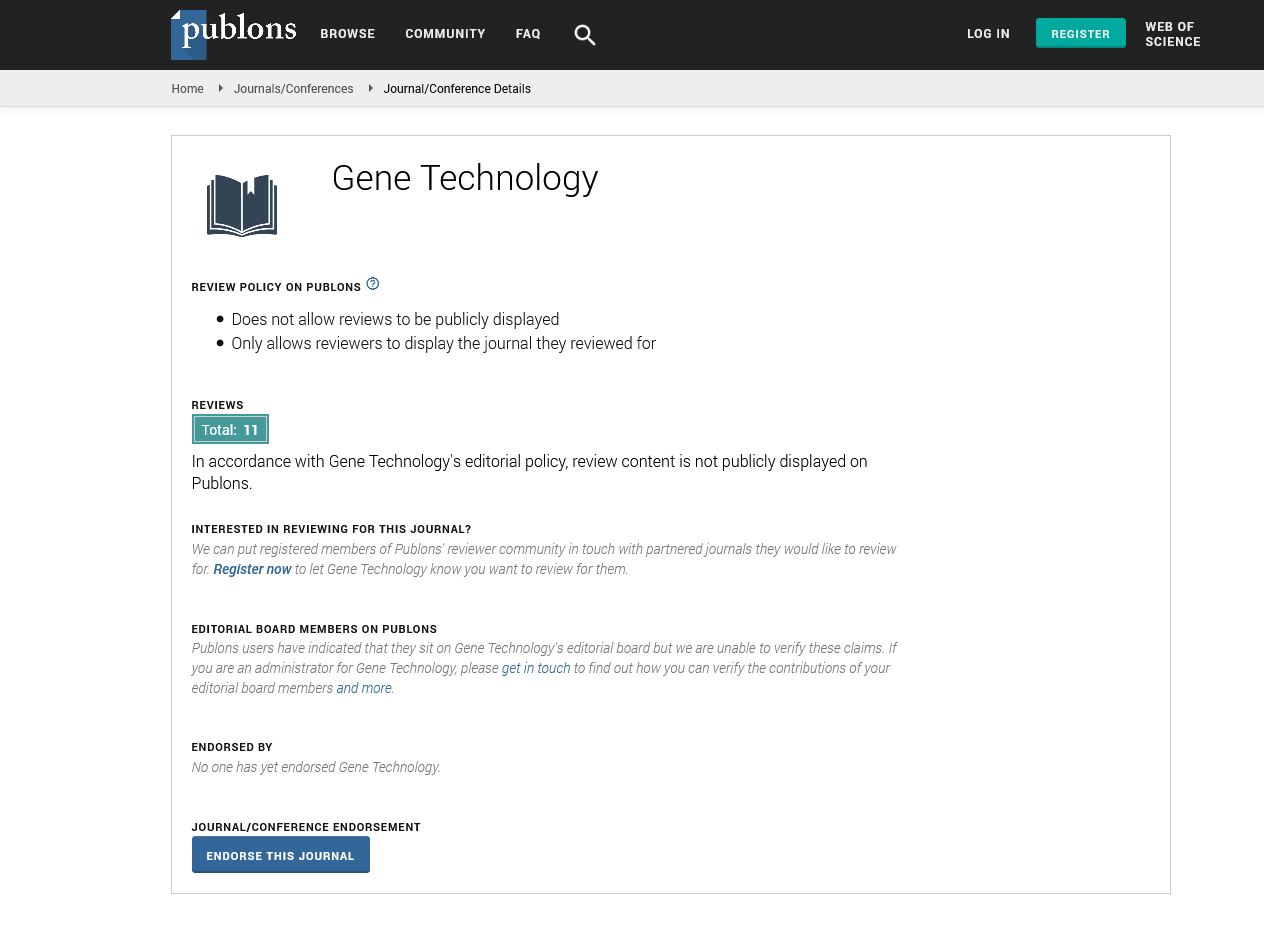Indexed In
- Academic Keys
- ResearchBible
- CiteFactor
- Access to Global Online Research in Agriculture (AGORA)
- RefSeek
- Hamdard University
- EBSCO A-Z
- OCLC- WorldCat
- Publons
- Euro Pub
- Google Scholar
Useful Links
Share This Page
Journal Flyer

Open Access Journals
- Agri and Aquaculture
- Biochemistry
- Bioinformatics & Systems Biology
- Business & Management
- Chemistry
- Clinical Sciences
- Engineering
- Food & Nutrition
- General Science
- Genetics & Molecular Biology
- Immunology & Microbiology
- Medical Sciences
- Neuroscience & Psychology
- Nursing & Health Care
- Pharmaceutical Sciences
Opinion - (2025) Volume 14, Issue 1
The Role of RNA Interference in Functional Genomics and Biotechnology
Aaron Schindeler*Received: 01-Mar-2025, Manuscript No. RDT-25-29038; Editor assigned: 03-Mar-2025, Pre QC No. RDT-25-29038 (PQ); Reviewed: 17-Mar-2025, QC No. RDT-25-29038; Revised: 24-Mar-2025, Manuscript No. RDT-25-29038 (R); Published: 31-Mar-2025, DOI: 10.35248/2329-6682.25.14.315
Description
RNA Interference (RNAi) is a vital biological process through which Double-Stranded RNA (dsRNA) molecules inhibit gene expression or translation by neutralizing targeted Messenger RNA (mRNA) molecules. First discovered in Caenorhabditis elegans by Andrew Fire and Craig Mello in 1998, RNAi has since emerged as a powerful genetic tool with broad implications in gene function studies, therapeutics, and agricultural biotechnology. This natural defense mechanism, initially characterized for its role in combating viral infections and transposon activity, has become central to modern gene technology.
The mechanism of RNAi begins when dsRNA enters a cell and is cleaved into small interfering RNAs (siRNAs) by the enzyme Dicer, an RNase III family member. These siRNAs are typically 21–23 nucleotides long and are subsequently incorporated into the RNA-induced Silencing Complex (RISC). Within this complex, one strand of the siRNA (the guide strand) remains bound to RISC, directing the complex to complementary sequences on target mRNA. Once bound, Argonaut, the catalytic component of RISC, cleaves the mRNA, leading to its degradation and subsequent inhibition of gene expression. This targeted silencing mechanism is remarkably specific, allowing precise regulation of gene expression at the post-transcriptional level.
Beyond siRNAs, another class of small RNAs, microRNAs (miRNAs), also play a pivotal role in RNAi. Unlike siRNAs, miRNAs are endogenously encoded and processed from primary transcripts known as pri-miRNAs. These molecules regulate gene expression by binding to partially complementary sequences in the 3’ Untranslated Regions (UTRs) of target mRNAs, usually resulting in translational repression or mRNA destabilization rather than direct cleavage. Together, siRNAs and miRNAs constitute a fundamental aspect of gene regulation in eukaryotic cells.
RNAi has revolutionized functional genomics by enabling systematic gene knockdown experiments. In model organisms such as Drosophila melanogaster, Arabidopsis thaliana, and mammalian cells, RNAi libraries allow researchers to interrogate the function of virtually every gene. This approach facilitates large-scale screens for gene function in development, disease, and metabolic pathways. Moreover, RNAi serves as a powerful complement to gene editing technologies like CRISPR-Cas9 by allowing temporary and reversible gene silencing, which is particularly valuable for studying essential genes.
In the realm of therapeutics, RNAi has opened new avenues for treating diseases with a genetic basis. Several RNAi-based drugs have been developed, including patisiran, the first FDA-approved siRNA drug, which treats hereditary transthyretin-mediated amyloidosis. These therapies work by silencing the expression of nanoparticles or other carriers. The specificity and potency of RNAi make it an attractive approach for targeting previously "undruggable" genes, including those involved in viral infections, cancers, and metabolic disorders. However, challenges such as off-target effects, immune responses, and delivery barriers still pose limitations to the widespread application of RNAi therapeutics.
RNAi also plays a transformative role in agriculture and biotechnology. Genetically engineered crops expressing dsRNA targeting specific pest genes have shown great promise in pest management, offering an environmentally friendly alternative to chemical pesticides. Additionally, RNAi has been used to enhance crop traits, such as improving shelf life, nutritional content, and resistance to pathogens. Regulatory approval of RNAi-based products in agriculture, such as Smarts tax PRO maize targeting corn rootworm, demonstrates the practical viability and acceptance of this technology.
Conclusion
As RNAi research progresses, it continues to bridge the gap between fundamental biology and applied science. Advances in delivery systems, chemical modifications, and genome-wide RNAi screens are expanding its utility across multiple disciplines. While limitations remain, ongoing innovations are likely to address these hurdles, solidifying RNAi as a foundation of gene technology and a key player in the future of precision medicine, sustainable agriculture, and molecular therapeutics.
Citation: Schindeler A (2025). The Role of RNA Interference in Functional Genomics and Biotechnology. Gene Technol. 14:315.
Copyright: © 2025 Schindeler A, et al. This is an open-access article distributed under the terms of the Creative Commons Attribution License, which permits unrestricted use, distribution, and reproduction in any medium, provided the original author and source are credited

